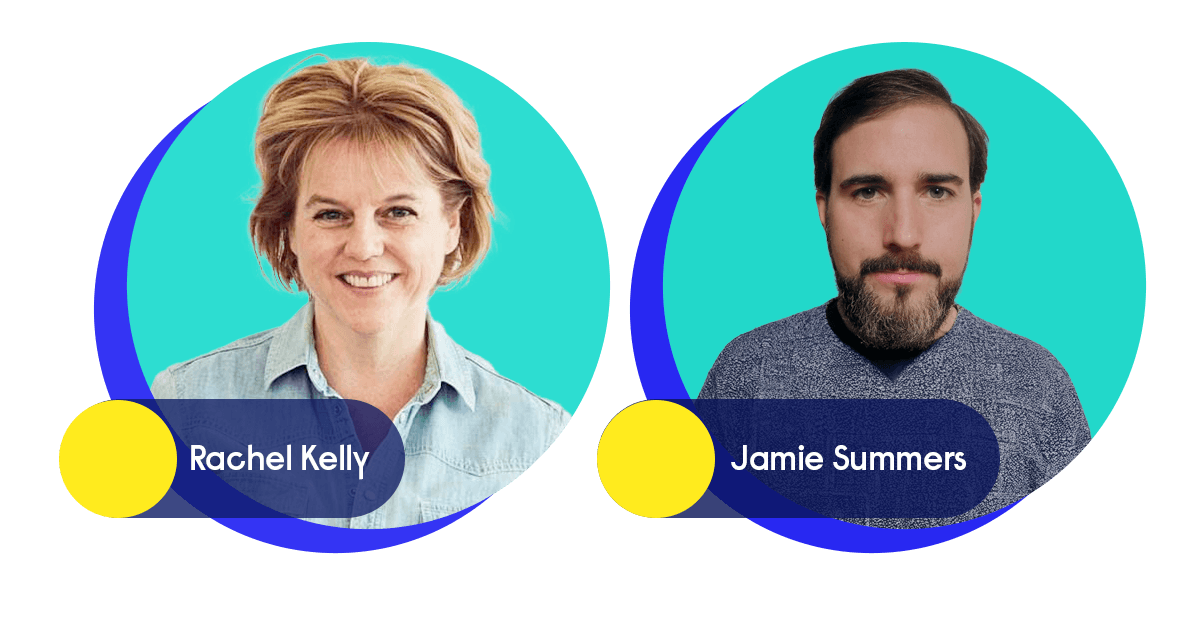At first glance, the office appears to be functioning normally. Desks are filled, Teams calls are on schedule, deadlines are being met. But behind the familiar rhythms of working life, a deeper crisis is simmering - one that’s affecting up to one in four of your employees - often without you even realising.
According to research Reed carried out with leading UK mental health charity SANE, 85% of UK employees have experienced symptoms of burnout caused by work - a statistic that has set alarm bells ringing across the human resources profession. In response, Reed and SANE published a free eBook to help employers manage mental health in the workplace and a webinar during Mental Health Awareness Week to investigate what’s fuelling mental ill-health at work and, crucially, how to address it.
The webinar, titled, ‘Championing mental health: building workplaces that thrive’, brought together two frontline experts: Rachel Kelly, a bestselling Author and mental health advocate with lived experience of anxiety and depression, and Jamie Summers, Services Operations Manager at SANE, who oversees the charity’s national emotional support infrastructure. Hosted by myself, the hour-long discussion offered not just hard truths, but practical solutions - and a rallying cry for change.

A workforce in silence
Our research with SANE paints a slightly worrying picture. Beyond the headline figure on burnout, many respondents reported working through illness, skipping breaks, and feeling unable to raise concerns about their mental health for fear of being judged or sidelined.
It’s no longer about isolated cases when it comes to mental health in the workplace. It’s a widespread problem as statistics show, and while there are pockets of progress the reality is that many employers are still not equipped to address the mental health of their workforce.
For Jamie Summers, the research findings were disturbingly familiar. Every evening, he oversees calls from people in crisis as part of SANE’s mental health helpline. “The cost-of-living crisis, job insecurity, isolation from remote work - it’s all coming to a head,” he said. “People feel enormous pressure to perform. They’re afraid to admit they’re struggling because they worry it will make them look weak, or worse, disposable.”
According to Jamie, some of the most distressing cases come from sectors already stretched thin. “Teachers, for example, often tell us they’re expected to perform at a superhuman level - working long hours, under intense scrutiny, and without adequate support.”
From reactive to preventative
Mental health isn’t just about dealing with crises - it’s about preventing them. That’s the message from Rachel Kelly, whose own journey through clinical depression and anxiety has informed her work as a mental health advocate. Rachel believes it’s time to move away from the outdated notion that mental illness is something that only happens “to other people.”
“We all have mental health, just like we all have physical health,” she said. “The issue isn’t binary. It’s a spectrum. You can feel fine today and overwhelmed next week. What matters is how workplaces respond when people start to slide along that spectrum.”
On the webinar she argued that many of the mental health issues people face in the workplace begin not with trauma, but with unrelenting stress, poor boundaries, and cultural stigma. “Anxiety is the most common condition, by far,” she noted. “And it often goes untreated because we’ve normalised high stress as just ‘part of the job.’”
But it doesn’t have to be that way. With the right culture, training, and leadership, both Rachel and Jamie believe that mental health support can become a routine part of business operations - not a reactive, after-the-fact intervention.
Communication is key, but so is culture
A major focus of the webinar was on how managers and team leaders can create safer, healthier working environments through consistent communication and compassion.
“Managers set the tone,” said SANE’s Jamie. “If they’re inaccessible, disengaged, or avoid talking about mental health, that trickles down. On the other hand, if they lead with empathy, listen actively, and support their team, people feel safer to speak up.”
This need for psychological safety, the ability to speak candidly without fear of reprisal, was a recurring theme. “It’s exhausting to have two identities,” Rachel added. “The one you show at work, and the one you hide. And that kind of emotional dissonance leads to burnout very quickly.”
The conversation extended into everyday practices that, while seemingly small, have a big impact: encouraging breaks, ending meetings on time, normalising conversations about mental wellbeing, and not glorifying overwork.
“It might sound simple but telling someone don’t work if you’re sick or take your lunch break, and meaning it, creates a culture of care,” added Jamie.
Mental health first aiders: on the frontline
One solution gaining momentum is the use of mental health first aiders (MHFA). These are employees trained to offer peer-level support, spot early warning signs, and guide colleagues to professional help.
“Training MHFAs is a practical, effective step,” said Rachel Kelly, who has undergone the training herself. “Even as someone who’s written books on mental health, I learned things that surprised me.”
But both experts stressed that training alone is not enough. Representation matters. “You need diversity among your first aiders,” said Summers. “People need to see themselves in the person they might confide in. That means having MHFAs across all levels - junior staff, managers, people of different ethnicities, genders, and lived experiences.”
He also emphasised the importance of supporting the first aiders themselves. “These roles can be emotionally taxing. Organisations need to offer debriefs, supervision, or additional counselling to those holding space for others.”
The hidden cost of mental health stigma
One of the biggest barriers to progress, the panel agreed, is the lingering stigma around mental illness. While there’s greater awareness today, fear of judgment still stops many from speaking up.
“That fear creates silence. And silence allows problems to worsen,” Rachel said.
Yet one of the most effective antidotes to stigma is personal storytelling. “When a senior leader says, ‘I’ve struggled with depression,’ it changes everything,” she explained. “It gives permission for others to speak, too.”
According to Jamie, authenticity matters more than perfection. “We’re not asking leaders to be therapists. Just be real. Be human. Show that it’s OK not to be OK.”
Art, creativity and healing: lessons from the unexpected
While much of the webinar focused on policy and communication, the panellists also explored less conventional tools for mental health - namely, creativity.
Singer-songwriter Melissa James, an ambassador for SANE and creator of the Sing for SANE mental health initiative, was due to join the panel but was unable to attend due to technical difficulties. Still, we celebrated her work as a powerful example of how arts can be therapeutic in the workplace.
Jamie said: “Art is how we process the unspoken. We get callers on the SANEline who write poetry, sing, or draw as a way of coping. It’s not about talent - it’s about release.”
Rachel agreed, describing how she would recite poetry during bouts of insomnia. “It made me feel less alone. Those verses reminded me that someone else had felt what I was feeling. That’s powerful.”
She encouraged employers to consider small creative initiatives - workplace choirs, journaling workshops, or art clubs, as part of broader well-being strategies. “It’s not fluff,” she said. “It’s medicine.”
The next workforce: anxious, ambitious, and looking for leadership
The conversation turned finally to young people entering the workforce, many of whom are struggling silently under the weight of uncertainty.
“This generation is more anxious than ever,” Rachel warned our listeners. “They’re unsure if their degrees will lead to real jobs. They’re entering a workforce that often doesn’t reflect their values around mental health and inclusion.”
For employers, this presents a clear challenge, but also an opportunity. “Young people want to learn. They want to contribute. If you offer support, mentorship, and clear development pathways, you’ll earn their loyalty,” she said.
Put your people first
There was so much information to be drawn from the webinar, but one truth is clear: businesses can no longer afford to ignore mental health.
Jamie highlighted: “When mental health is neglected, performance suffers. Morale drops. Retention plummets. But when people feel supported, when they’re trusted and listened to, they give their best.”
Rachel summed it up with characteristic clarity: “Supporting mental health isn’t just good ethics. It’s good economics. It’s how we build workplaces that don’t just function - but flourish.”
To help organisations take the next step, Reed and SANE have published a comprehensive eBook featuring tools and advice on integrating mental health into the fabric of working life. Download the free guide now.
For immediate support, individuals can contact the SANEline on 0300 304 7000 or visit www.sane.org.uk.



